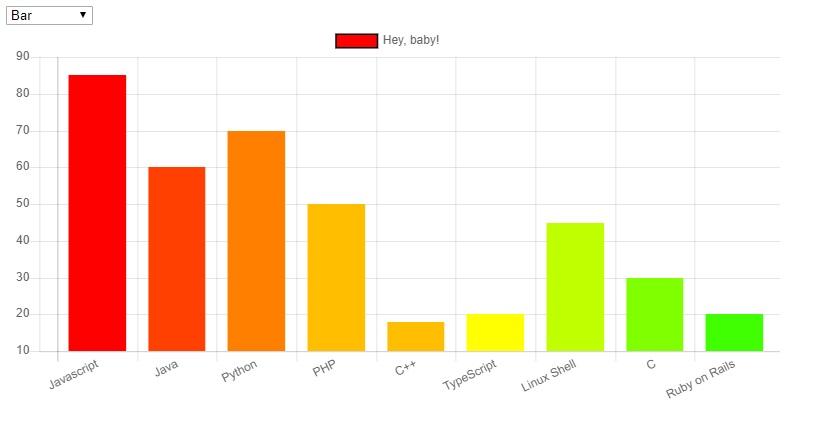
What is the use of vars(), dir() and help() functions?
Last updated 1 year, 10 months ago | 425 views 75 5

Python | vars(), dir() and help()
- The vars() function returns the __dict__ attribute of an object.
- The dir() function returns all properties and methods of the specified object, without the values.
- The help() function is used to display the documentation string and also facilitates us to see the help related to modules, keywords, and attributes.
vars()
The vars() function is part of the standard library in Python and is used to get an object’s _dict_ attribute. The returned _dict_ attribute contains the changeable attributes of the object. This means that when we update the attribute list of an object, the var() function will return the updated dictionary.
class Student:
name = "John"
age = 36
country = "Norway"
print(vars(Student))
# Output
mappingproxy({'__module__': '__main__', 'name': 'John', 'age': 36, 'country': 'Norway', '__dict__': <attribute '__dict__' of 'Student' objects>, '__weakref__': <attribute '__weakref__' of 'Student' objects>, '__doc__': None})
dir()
The dir() function tries to return a valid list of attributes and methods of the object it is called upon. It behaves differently with different objects, as it aims to produce the most relevant data, rather than the complete information.
- For Modules/Library objects, it returns a list of all attributes, contained in that module.
- For Class Objects, it returns a list of all valid attributes and base attributes.
- With no arguments passed, it returns a list of attributes in the current scope.
class Student:
name = "John"
age = 36
country = "Norway"
print(dir(Student))
# Output
['__class__', '__delattr__', '__dict__', '__dir__', '__doc__', '__eq__', '__format__', '__ge__', '__getattribute__', '__gt__', '__hash__', '__init__', '__init_subclass__', '__le__', '__lt__', '__module__', '__ne__', '__new__', '__reduce__', '__reduce_ex__', '__repr__', '__setattr__', '__sizeof__', '__str__', '__subclasshook__', '__weakref__', 'age', 'country', 'name']
help()
The help() method calls the built-in Python help system. It is used to display the documentation string and also facilitates us to see the help related to modules, keywords, and attributes.
class Student:
name = "John"
age = 36
country = "Norway"
print(help(Student))
# Output
Help on class Student in module __main__:
class Student(builtins.object)
| Data descriptors defined here:
|
| __dict__
| dictionary for instance variables (if defined)
|
| __weakref__
| list of weak references to the object (if defined)
|
| ----------------------------------------------------------------------
| Data and other attributes defined here:
|
| age = 36
|
| country = 'norway'
|
| name = 'John'
Tips and Tricks
What is pass in Python?
Python | Pass Statement
The pass statement is used as a placeholder for future code. It represents a null operation in Python. It is generally used for the purpose of filling up empty blocks of code which may execute during runtime but has yet to be written.
def myfunction():
pass
How can you generate random numbers?
Python | Generate random numbers
Python provides a module called random using which we can generate random numbers. e.g: print(random.random())
We have to import a random module and call the random() method as shown below:
import random
print(random.random())
The random() method generates float values lying between 0 and 1 randomly.
To generate customized random numbers between specified ranges, we can use the randrange() method
Syntax: randrange(beginning, end, step)
import random
print(random.randrange(5,100,2))
What is lambda in Python?
Python | Lambda function
A lambda function is a small anonymous function. This function can have any number of parameters but, can have just one statement.
Syntex:
lambda arguments : expression
a = lambda x,y : x+y
print(a(5, 6))
It also provides a nice way to write closures. With that power, you can do things like this.
def adder(x):
return lambda y: x + y
add5 = adder(5)
add5(1) #6
As you can see from the snippet of Python, the function adder takes in an argument x and returns an anonymous function, or lambda, that takes another argument y. That anonymous function allows you to create functions from functions. This is a simple example, but it should convey the power lambdas and closures have.
What is swapcase() function in the Python?
Python | swapcase() Function
It is a string's function that converts all uppercase characters into lowercase and vice versa. It automatically ignores all the non-alphabetic characters.
string = "IT IS IN LOWERCASE."
print(string.swapcase())
How to remove whitespaces from a string in Python?
Python | strip() Function | Remove whitespaces from a string
To remove the whitespaces and trailing spaces from the string, Python provides a strip([str]) built-in function. This function returns a copy of the string after removing whitespaces if present. Otherwise returns the original string.
string = " Python "
print(string.strip())
What is the usage of enumerate() function in Python?
Python | enumerate() Function
The enumerate() function is used to iterate through the sequence and retrieve the index position and its corresponding value at the same time.
lst = ["A","B","C"]
print (list(enumerate(lst)))
#[(0, 'A'), (1, 'B'), (2, 'C')]
Can you explain the filter(), map(), and reduce() functions?
Python | filter(), map(), and reduce() Functions
- filter() function accepts two arguments, a function and an iterable, where each element of the iterable is filtered through the function to test if the item is accepted or not.
>>> set(filter(lambda x:x>4, range(7))) # {5, 6}
-
map() function calls the specified function for each item of an iterable and returns a list of result
>>> set(map(lambda x:x**3, range(7))) # {0, 1, 64, 8, 216, 27, 125}
-
reduce() function reduces a sequence pair-wise, repeatedly until we arrive at a single value..
>>> reduce(lambda x,y:y-x, [1,2,3,4,5]) # 3Let’s understand this:
2-1=1
3-1=2
4-2=2
5-2=3Hence, 3.
What is a namedtuple?
Python | namedtuple
A namedtuple will let us access a tuple’s elements using a name/label. We use the function namedtuple() for this, and import it from collections.
>>> from collections import namedtuple
#format
>>> result=namedtuple('result','Physics Chemistry Maths')
#declaring the tuple
>>> Chris=result(Physics=86,Chemistry=92,Maths=80)
>>> Chris.Chemistry
# 92
Write a code to add the values of same keys in two different dictionaries and return a new dictionary.
We can use the Counter method from the collections module
from collections import Counter
dict1 = {'a': 5, 'b': 3, 'c': 2}
dict2 = {'a': 2, 'b': 4, 'c': 3}
new_dict = Counter(dict1) + Counter(dict2)
print(new_dict)
# Print: Counter({'a': 7, 'b': 7, 'c': 5})
Python In-place swapping of two numbers
Python | In-place swapping of two numbers
>>> a, b = 10, 20
>>> print(a, b)
10 20
>>> a, b = b, a
>>> print(a, b)
20 10
Reversing a String in Python
Python | Reversing a String
>>> x = 'PythonWorld'
>>> print(x[: : -1])
dlroWnohtyP
Python join all items of a list to convert into a single string
Python | Join all items of a list to convert into a single string
>>> x = ["Python", "Online", "Training"]
>>> print(" ".join(x))
Python Online Training
python return multiple values from functions
Python | Return multiple values from functions
>>> def A():
return 2, 3, 4
>>> a, b, c = A()
>>> print(a, b, c)
2 3 4
Python Print String N times
Python | Print String N times
>>> s = 'Python'
>>> n = 5
>>> print(s * n)
PythonPythonPythonPythonPython
Python check the memory usage of an object
Python | Check the memory usage of an object
>>> import sys
>>> x = 100
>>> print(sys.getsizeof(x))
28


